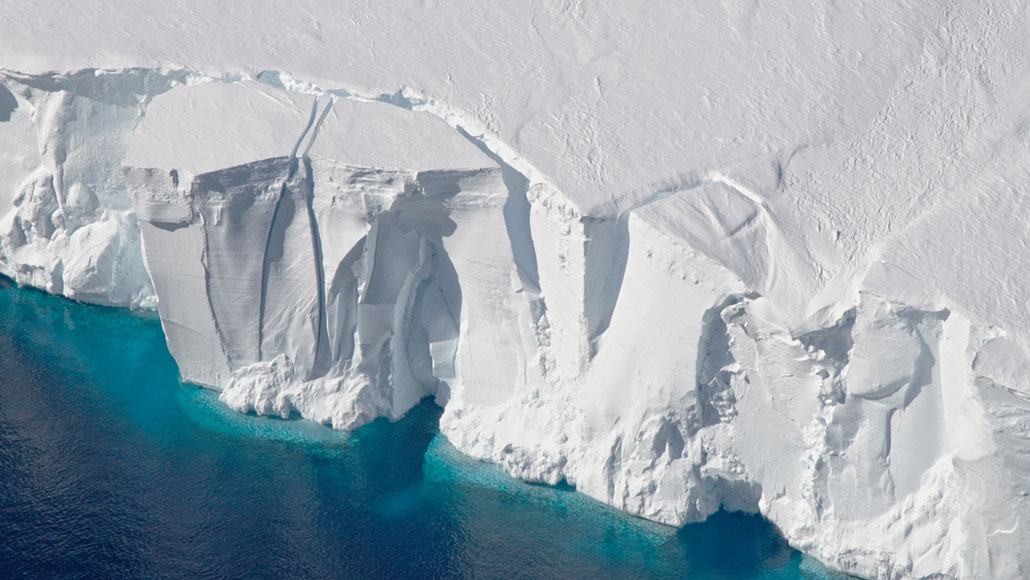
The collapse of ice cliffs into the sea (as might happen at Antarctica’s Getz Ice Sheet, shown) won’t necessarily lead to runaway breakup of the glacier upstream, new simulations suggest.
Jeremy Harbeck/NASA

The collapse of ice cliffs into the sea (as might happen at Antarctica’s Getz Ice Sheet, shown) won’t necessarily lead to runaway breakup of the glacier upstream, new simulations suggest.
Jeremy Harbeck/NASA